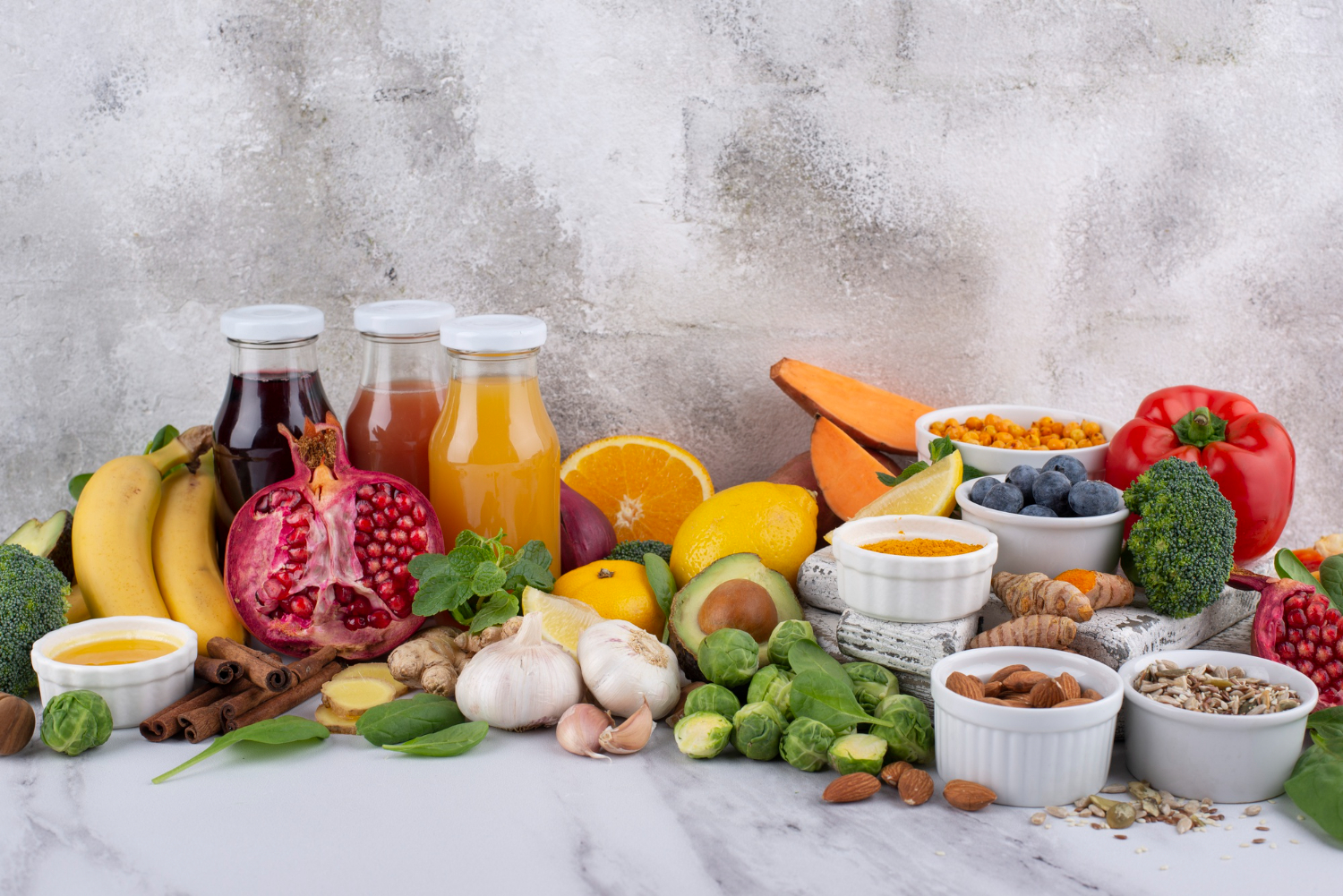Anti-nutrients are substances that are part of the defence mechanism of plants against possible external attacks. These natural compounds can block the absorption or activity of vitamins and minerals.
The most important ones are:
1. LECTINS
Lectins are glycoproteins found in the seed, legume and grain families, such as rice, wheat, barley and maize, as well as nuts, some fruits and vegetables. Lectin-rich foods are rich in nutrients and contain antioxidant and anti-inflammatory compounds.
Some of these lectins can be harmful if consumed in high amounts, as they bind to the intestinal microvilli and create a coating in the small intestine that prevents nutrient absorption, leading to alterations in the microbiota.
Some symptoms that may appear in people are vomiting, diarrhoea, abdominal pain, and may increase the risk of autoimmune diseases.
How to reduce them:
With soaking, boiling, boiling, autoclaving, germination, fermentation; improves protein digestion and gut/immune health.
2. OXALATES
They are formed by an organic acid (oxalic acid), which binds to minerals such as sodium, potassium, calcium, iron or magnesium affecting their absorption. They can form oxalic acid crystals that can create kidney stones.
They are found in foods such as spinach, chard, sorrel, beet leaves, beet root, rhubarb, nuts, legumes, cereal grains, sweet potatoes and potatoes.
How to reduce them:
By soaking, boiling, steaming, combining with calcium-rich foods.
Calcium-rich foods should be ingested in adequate amounts in the diet to improve intestinal health and the microbiome.
3. GOITROGEN (Glucosinolates)
These anti-nutrients depress thyroid activity by interfering with thyroid uptake of iodine, increasing the risk of goitre. They are found in brassica vegetables (kale, Brussels sprouts, cabbage, turnip, Chinese cabbage, broccoli), millet, cassava or peanuts …
glucosinolates, compounds known for their cancer-protective properties and which, despite being a phytonutrient, are also considered to be anti-nutrients.
How to reduce them:
By using the culinary technique of steaming or boiling. This ensures healthy thyroid function as well as good iodine absorption in the diet, but reduces some of the healthy nutrients.
4. PHYTOESTROGENS
These are polyphenolic compounds that modulate oestrogen. They include isoflavones, lignans, stilbene and coumestrol, trypsin inhibitors and solanine (found in solanaceae).
They are found in foods such as soya and derivatives, flaxseeds, nuts, fruits and vegetables.
Genistein is an isoflavone found in soya that blocks the activity of the enzyme thyroid peroxidase.
How to reduce them:
Through fermentation, an improvement of the gut microbiome is achieved to aid the increase of beneficial metabolites such as soy isoflavones in equol.
5. PHYTATES
They are phosphorus storage compounds, act as antioxidants and as energy sources. They are present in seeds, grains, nuts, legumes, amaranth, quinoa and millet.
They can chelate (sequester) certain minerals and affect the absorption of zinc, iron, magnesium, copper, phosphorus and calcium.
May inhibit digestive enzymes such as amylase, trypsin and pepsin, which are needed to break starch and proteins into smaller fractions.
They can improve glucose response and have a disease-preventive effect.
How to reduce them:
By soaking, boiling, sprouting, fermentation. Ensure adequate intake and mineral status; include vitamin C to help counteract effects on mineral absorption.
6. TANNINS
A class of large polyphenols responsible for the astringent taste of fruits and some beverages that hinder digestion and absorption of nutrients such as protein or iron and decrease their digestibility. Resveratrol in grapes and green tea are some examples of foods containing this polyphenol.
It is also a powerful antioxidant, protecting cells against free radical damage, improving blood glucose levels and preventing diseases such as cancer and cardiovascular disease.
How to reduce them:
Through cooking, peeling the skin of fruits; it is advisable to drink tea separately from iron-rich foods; ensure adequate iron stores; use vitamin C to improve the absorption of non-haem iron.
7. OTHERS:
GLUTEN
Gluten is found in cereals such as wheat, rye, barley and triticale (a cross between wheat and rye). It is a protein complex (gliadin and glutenin) that causes severe nutrient absorption problems and an autoimmune response in people with coeliac disease.
Gliadin has also been shown to resist the degrading action of digestive enzymes and to reach the intestinal epithelial cells intact, leading to increased intestinal permeability and the risk of autoimmune disorders.
PROTEASE INHIBITORS
Protease inhibitors are found especially in seeds, grains and legumes, and interfere with the proteolytic activity of certain enzymes, affecting protein digestion by inhibiting digestive enzymes.
SAPONINS
Saponins are substances found mainly in legumes such as soybeans and chickpeas. They can be poorly absorbed and trigger intestinal inflammation problems, and by extension immune system problems. They also hinder the digestibility and absorption of proteins.
Precautions before consumption:
Assess concentration. Low levels of phytic acid, lectins or phenolic compounds help to reduce blood glucose levels, cholesterol and triglycerides in plasma. In addition, dietary fibre is very important for intestinal health and helps to prevent chronic diseases such as diabetes, cardiovascular disease, overweight, obesity, etc.
Time between intakes. This is also the case with the flavonoids present in tea and coffee. They may limit the absorption of minerals, but these phenolic compounds are antioxidants that are beneficial to health. In this case, the problem is solved by separating tea or coffee intake from food.
In summary, these are the main techniques for reducing anti-nutrients:
1. REMOVAL
Most of these substances are found in the skin of vegetables, as is the case with pulses. It is therefore recommended that pulses are left to soak, as these substances pass into the water during soaking.
SOAKING TIME FOR PULSES
In about 12 hours their phytate content is reduced by 9%.
Between 6 and 18 hours, lectins are reduced by 38-50%, tannins by 13-25% and protease inhibitors by 28-30%.
These percentages vary depending on the type of legume.
2. FERMENTATION AND PROBIOTICS
The fermentation process has been used since ancient times to preserve food, as well as to reduce the presence of anti-nutrients. This process provides beneficial probiotic bacteria and reduces the concentration of phytates.
3. SPROUTING
Sprouting seeds, grains and legumes can also increase the absorption of minerals such as iron, phosphorus and zinc. In the case of seeds, it is recommended to germinate them for at least four days. After germination, it is also recommended to rinse them well.
4. VITAMIN C
It has also been shown that increasing the consumption of foods rich in vitamin C promotes the absorption of nutrients, despite the presence of anti-nutrients.
IS THERE A NEED TO WORRY ABOUT ANTI-NUTRIENTS?
If there is no health problem (of autoimmune origin), if you follow a balanced and varied diet, rich in vegetables and fruits, despite their anti-nutrient content, you will most likely not have any health problems, and you will also benefit from all the health advantages they present.
If you are deficient in iron or any other nutrient, it is advisable to plan your meals to optimise their absorption. Iron absorption, for example, is multiplied by combining plant sources of the mineral with foods rich in vitamin C.
Source:
Petroski, W. and Minich, D. M. (2020). Is there such a thing as “anti-nutrients”? A narrative review of perceived problematic plant compounds. Nutrients, 12(10), 2929. MDPI AG. Retrieved from http://dx.doi.org/10.3390/nu12102929



